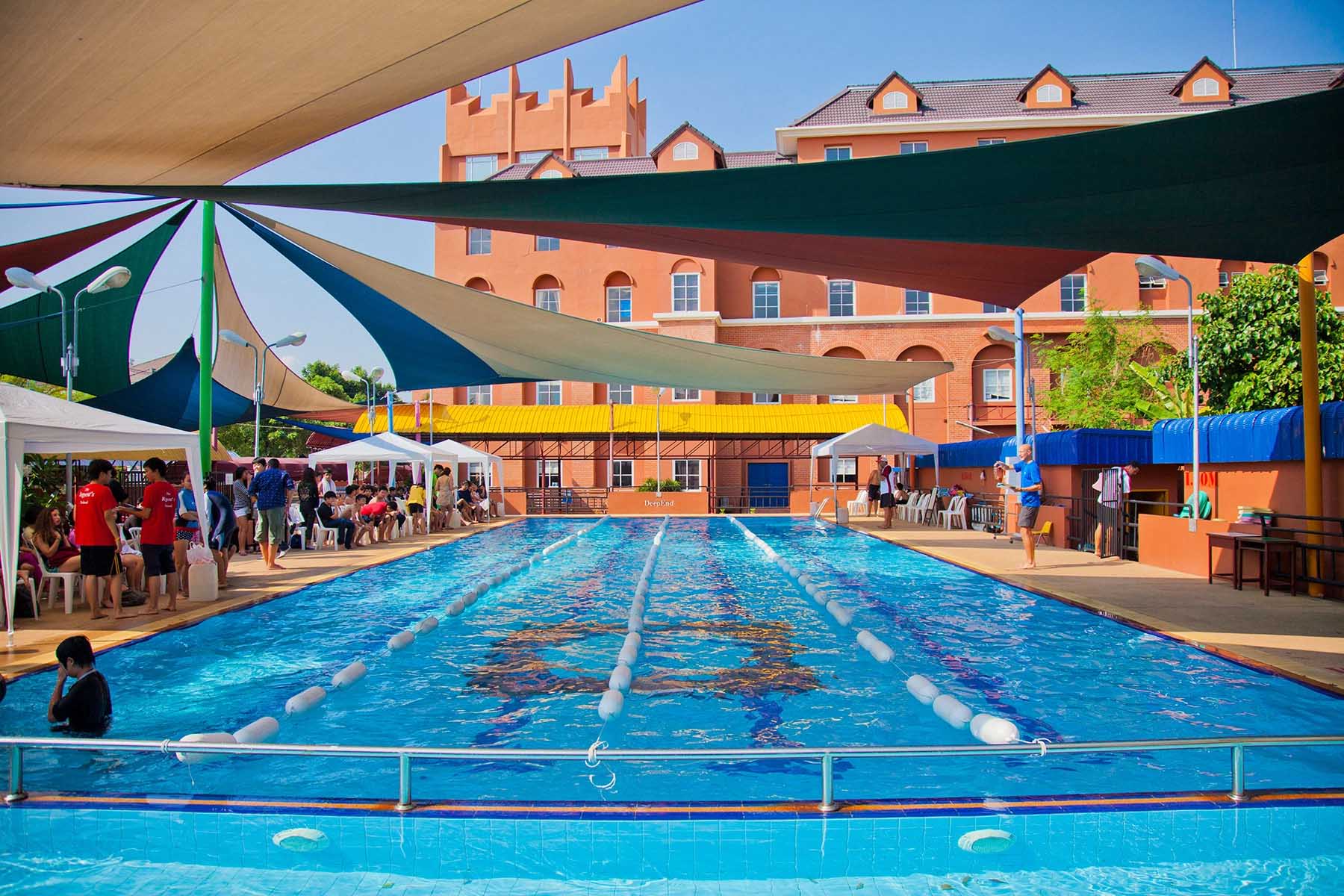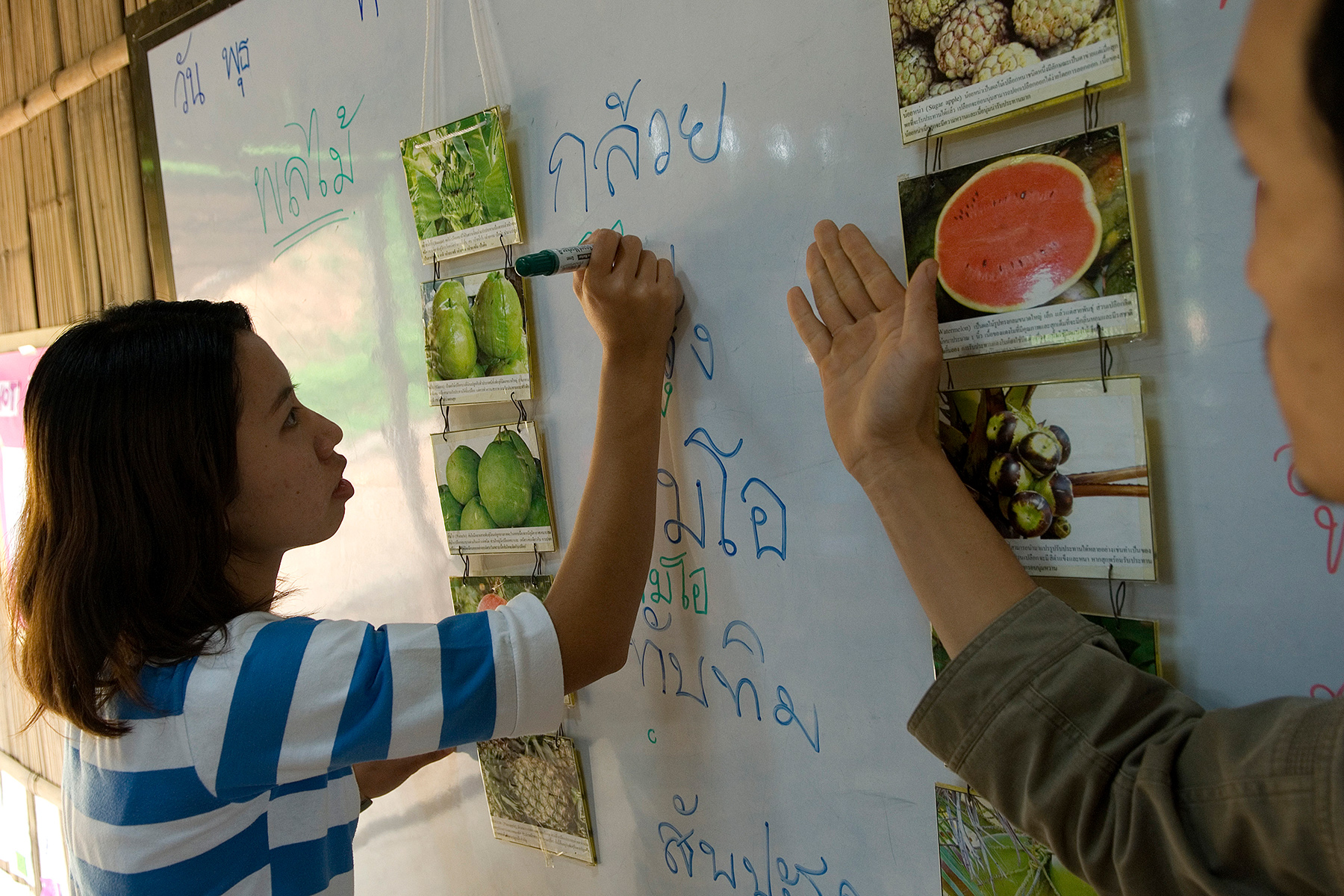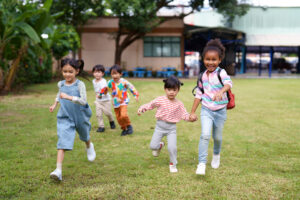There are many things to arrange when moving to a new country, such as sorting out a place to live and finding a job. If you are a parent, it also includes choosing a school for your children.
Fortunately, there are plenty of options to choose from, including public, private, and international schools. That said, many documents, websites, and conversations may be in Thai. Therefore, it may be beneficial to start learning the local language before you relocate.
To help you make an informed decision about where to enroll your child, this article includes the following:
Cigna Global
Enjoy peace of mind for your family while living in Thailand with Cigna Global’s long-term international health insurance plans (12+ months). Get tailored coverage, direct billing with many providers, complex case management, and global care on demand, with access to a network of 1.5+ million doctors, specialists, and pediatricians.
An overview of the Thai education system
Thailand’s Ministry of Education (MOE) governs education in the country. The system is divided into the following levels:
| Stage | Age range |
| Pre-elementary school (อนุบาล) | 3-5 |
| Primary school (ประถมศึกษา) | 6-11 |
| Lower Secondary school (มัธยมต้น) | 12-14 |
| Upper Secondary school (มัธยมปลาย) | 15-17 |
| Vocational and Technical Education (อาชีวะศึกษา) | 15-17 |
| University (มหาวิทยาลัย) | 18-21 |
Basic education is free in Thailand for the first 12 years, including the first three years of preschool. It is divided into two parts:
- Pratom Suksa, known as Pratom 1-6 (primary education)
- Mattayom Suksa, known as Mattayom 1-6 (secondary education)
The government fully or partially funds basic education for students who attend public schools in Thailand. Attending preschool is optional, but children must complete Pratom Suksa and Mattayom Suksa education. Many students also go on to study vocational or higher education at colleges and universities, though this is not mandatory.
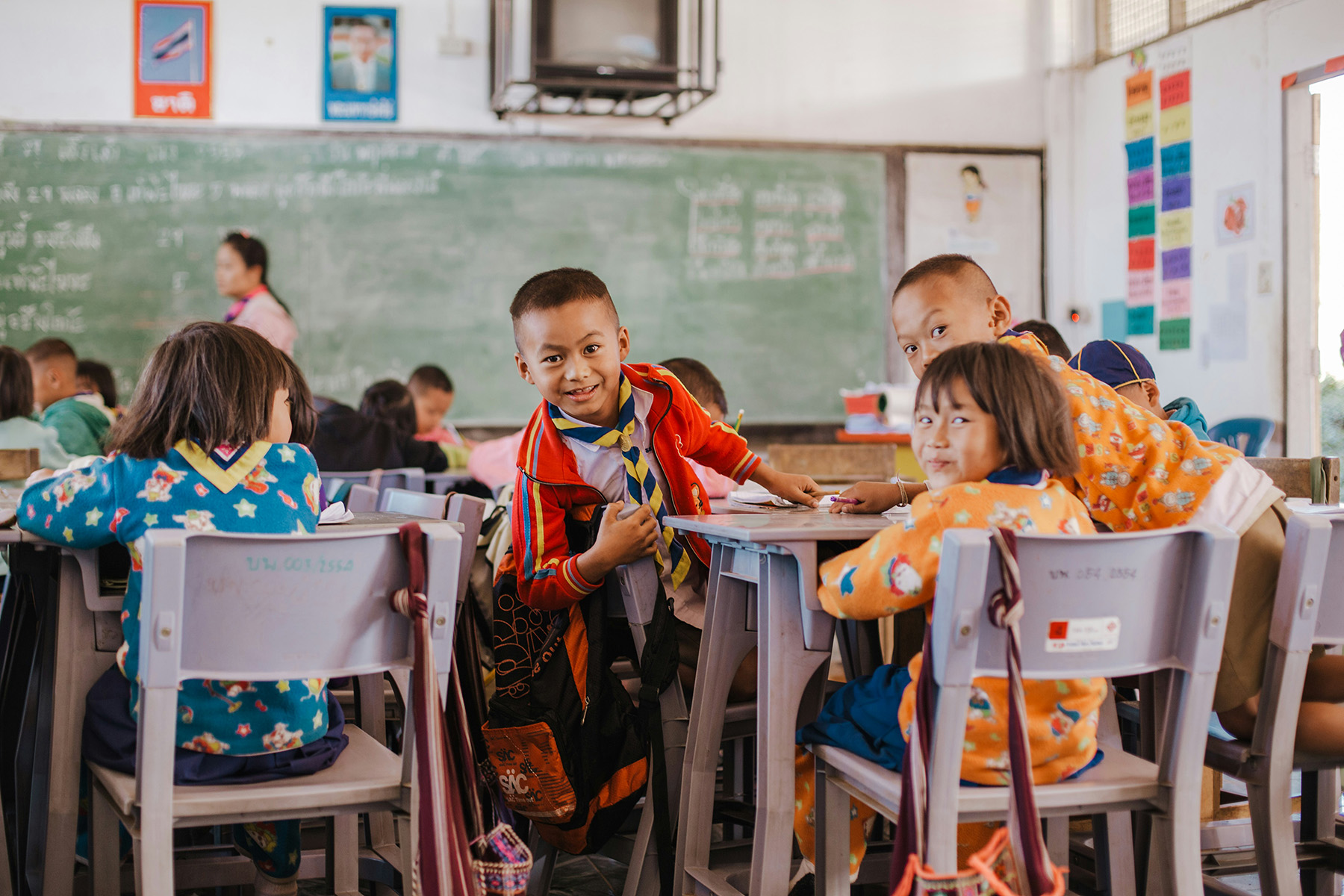
The quality of public school education in Thailand varies depending on location. For instance, many government schools in urban areas uphold a high reputation and are known for their high standards of academic rigor. Schools in more rural areas often lack educational resources and funding.
The academic school year in Thailand is split into two terms. The first runs from May to September, and the second is from October to February. Summer break lasts for two months, between March and April.
Is corporal punishment legal in Thai schools?
Thailand prohibits corporal punishment in schools. However, it’s not rare for physical violence to occur at both public and private institutions. According to a 2020 survey by the Thailand Development Research Institute, as many as 60% of students say they face corporal punishment in various forms of physical violence.
This report came in the wake of a 2020 scandal that shocked Thailand, which saw teachers and caregivers using corporal punishment to ‘discipline’ kindergarteners. Students of Sarasas Witaed Ratchaphruek School often faced severe beatings. Some also had their heads shoved in a black plastic bag, a technique used to torture terrorists.
While these harsh punishments are an extreme example, it is not uncommon for teachers to slap or use a wooden stick on students. Before enrolling a child in school, parents are strongly advised to research the school’s punishment methods and ask around with other parents.
It’s worth noting that 58% of Thai parents believe physical punishment is a necessary part of raising children (2019). You should, therefore, find multiple sources before choosing your child’s school.
If you are a child experiencing (school) violence, you can call Childline Thailand at 1387.
Preschool education in Thailand
Preschool education (Anubarn) is available in both public and private schools in Thailand for children aged three to five. While it is not mandatory to attend, it is still popular among some parents. Indeed, around 1.09 million students were enrolled in a public preschool in 2021.
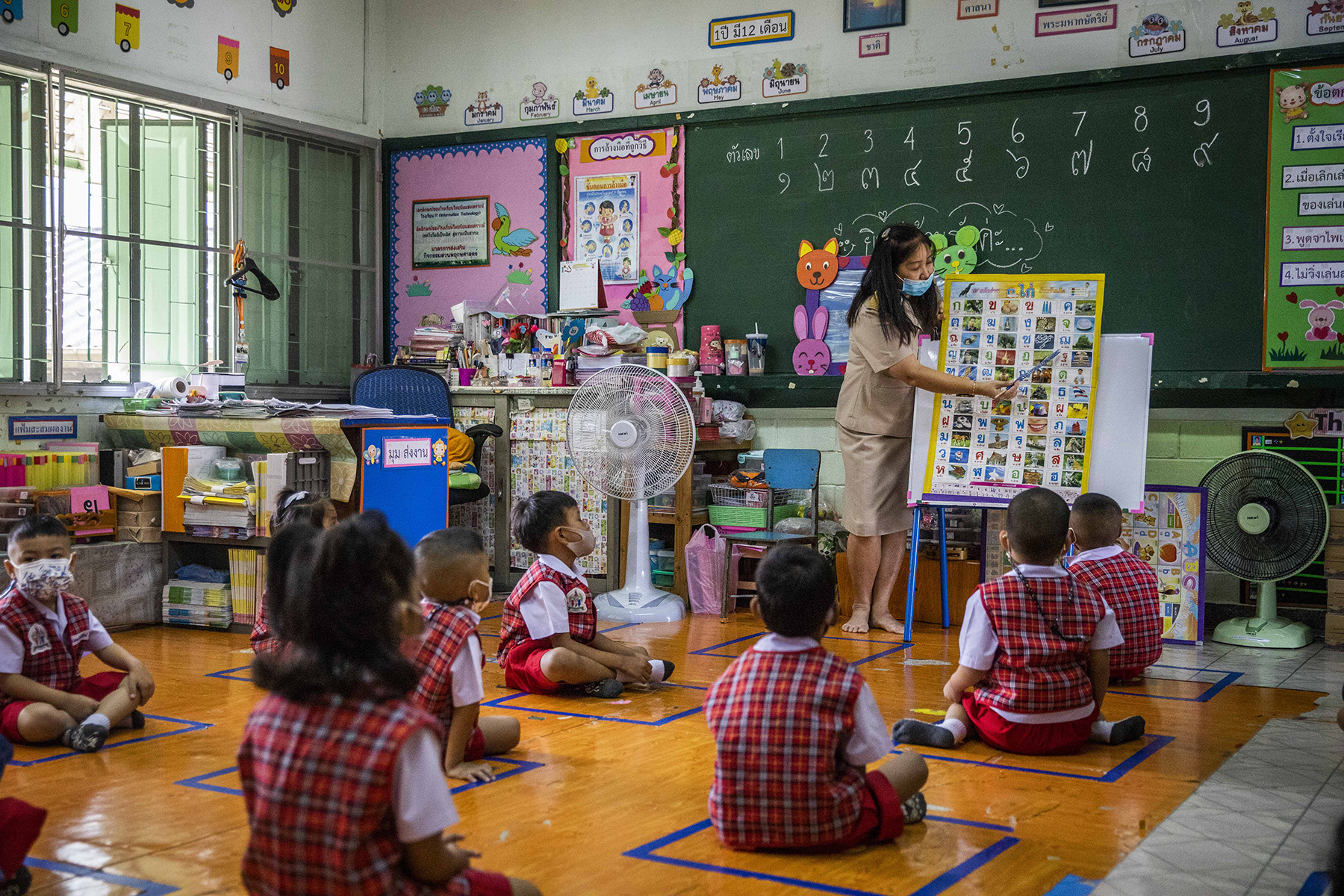
Public government-funded schools offer preschool education in the Thai language. However, there are also numerous international preschools that teach in English and provide a stepping stone for children entering a global curriculum in Thailand. Additionally, there are bilingual school programs that conduct classes in both Thai and English.
It is important to be aware that preschool fees vary significantly depending on whether the preschool is private or government-owned. For instance, private and international preschools can charge around ฿150,000 per semester.
Other factors include its location, the curriculum offered, and whether or not classes are taught in English or Thai; English-language schools are generally more costly. Therefore, parents should carefully research and shortlist schools to meet their budget.
Primary education in Thailand
Thailand’s primary school system is known as Pratom Suksa. It lasts for six years between the ages of 6 and 11. This is compulsory for students and is funded by the government.
Primary schools in Thailand follow the Thai National Curriculum, comprising eight core subjects:
- Art
- Foreign languages
- Health and physical education
- Mathematics
- Occupation and technology
- Science
- Social studies, religion, and culture
- Thai language
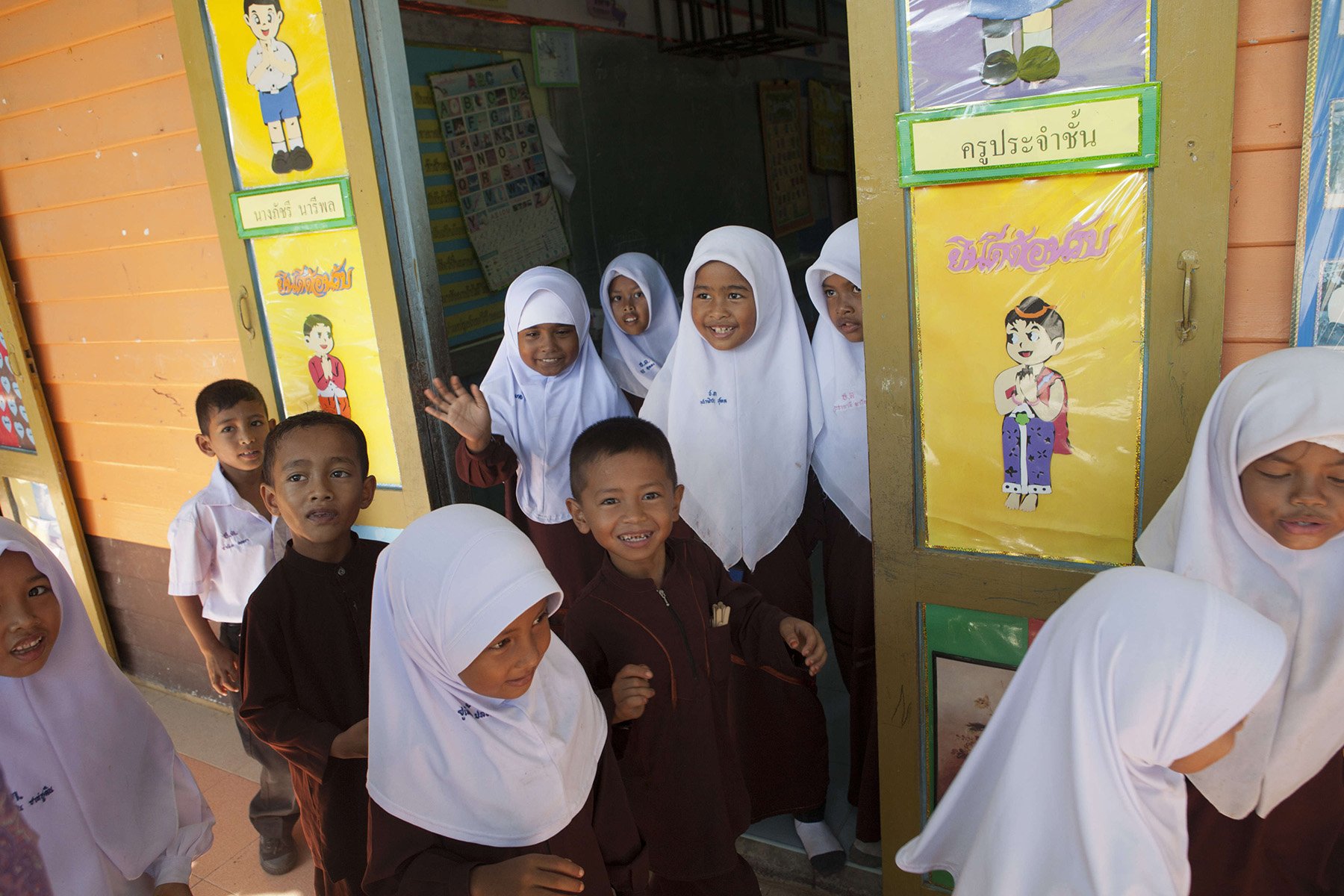
Parents can choose to send their child to:
- A public or private primary school where the primary language of instruction is Thai
- An international school that conducts classes in English
- A bilingual school that allows their children to learn in both languages
Homeschooling is also legal in Thailand.
Of course, having a basic level of the local language is highly recommended if your child is going to attend a school that is taught in Thai.
Public primary schools
There are a variety of public primary school options to choose from, depending on your budget, location, and preferences. Many parents choose to send their children to the nearest public primary school in the district.
Public schools in Thailand are tuition-free. Parents only need to pay for things such as the necessary uniforms, school lunches, and textbooks. While these costs may vary, they generally range from ฿10,000 to ฿30,000 per semester.
English Programs (EP)
Thai is the main language spoken in public primary schools in Thailand. Because of this, most expats choose to enroll their children at international schools that cater to foreign students.
That said, most public primary schools teach English as an additional subject. This allows students to learn and practice some basic foundational skills such as reading, writing, listening, and speaking. These lessons are usually taught by foreign teachers specializing in teaching English as a second language and focusing on beginner levels.
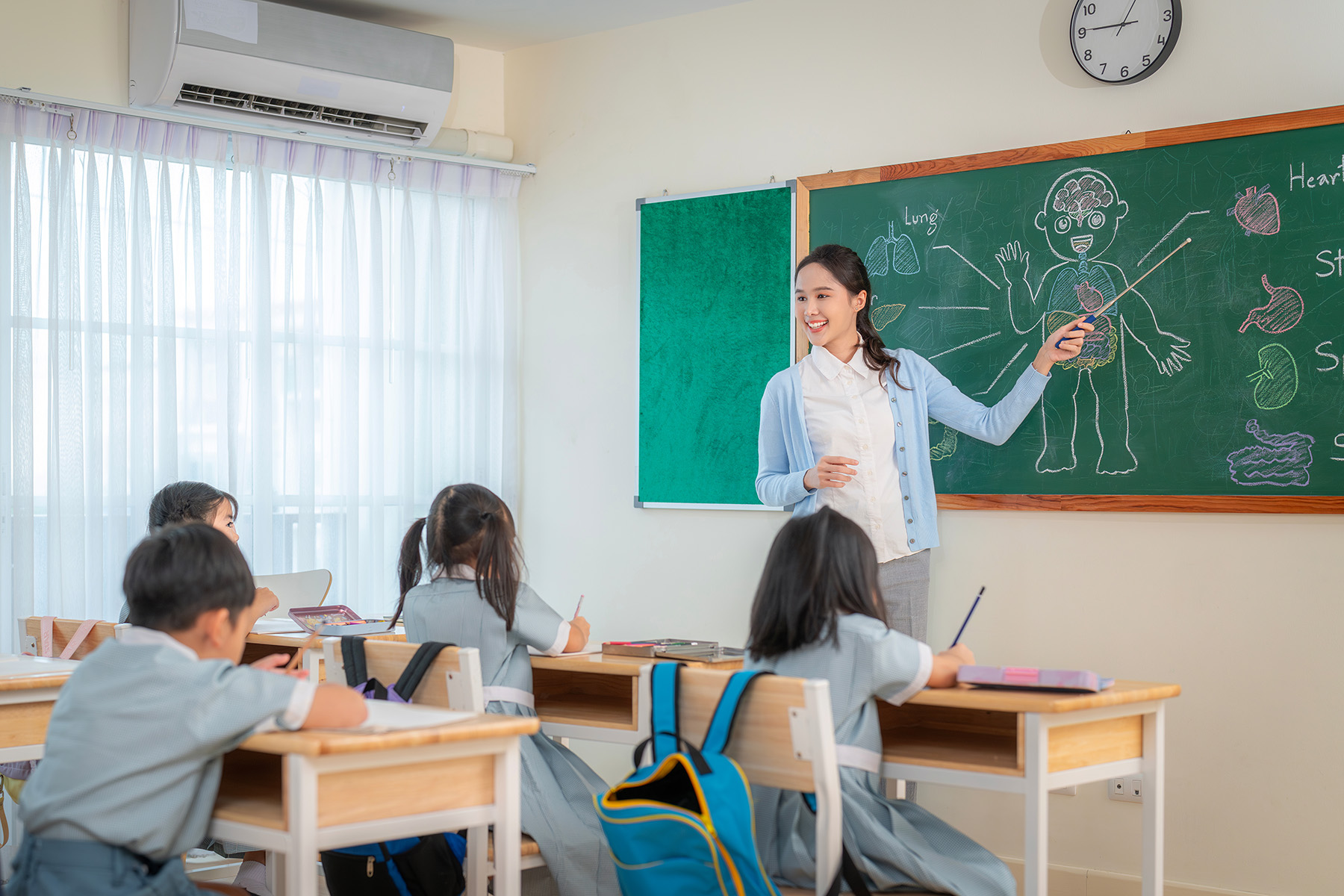
Students must achieve high grades in English as a subject before they can qualify for the English Program (EP). Once part of the EP, they will be immersed in the language as many of their subjects will be taught by native-speaking English teachers. This allows them more exposure to become fluent.

Writer and local expert
Minnikar Khamrit
However, it is important to be aware that the English Program in Thai schools still operates under the Thai curriculum. International schools, on the other hand, follow foreign curriculums, such as American or British.
Moreover, every school offers a different learning approach when it comes to its EP. That means that parents should explore multiple options before making a decision.
The EP allows students to graduate from the Thai National Curriculum with a solid English academic grounding without the price tag of attending an international school. It will give them more opportunities to study further locally or abroad.
Private primary schools
Private primary schools in Thailand are accessible, though they cost more than public ones. Parents who decide to go the private route can also choose between international or bilingual schools. Both are very popular options among expat families.
Private primary schools also follow the Thai National Curriculum. However, they may have higher educational standards than public government-owned schools.
Private and bilingual schools are slightly more expensive to attend than public ones in Thailand. However, international schools are the most expensive option.
Below is an overview of what each type of primary school in Thailand offers:
| Education style | Description |
| International schools | A multicultural and ethnically diverse range of students Follows an international curriculum (IB, American Curriculum, British Curriculum) Popular choices among expat families Tuition ranges from ฿200,000 to ฿1,200,000 per academic year |
| Bilingual schools | Focuses on foreign language learning via language immersion in the classroom (Thai and English) Follows the Thai National Curriculum Tuition ranges from ฿150,000 to ฿500,000 per academic year |
| Montessori schools | Independent private institutions that offer a child-focused approach with an emphasis on connecting with the environment around them Encourages individual learning with an emphasis on sensorial development There are limited options available in Thailand, with average tuition starting at approximately ฿130,000 per academic year |
| Demonstration schools | Operated by Thai universities for the purpose of educational research and development Provide a gateway for students to continue future secondary and higher education studies at affiliated universities Average tuition is between ฿130,000 and ฿180,000 per academic year |
Secondary education in Thailand
The secondary education system (Mattayom Suksa) is broken down into two parts, as follows:
| Stages | Age Range |
| Lower Mattayom Suksa (มัธยมต้น) | 12-14 |
| Upper Mattayom Suksa (มัธยมปลาย) | 15-17 |
All students must complete Lower Mattayom Suksa. However, they can then decide whether to progress to Upper Mattayom Suksa and follow a general stream of study.
What does the secondary school system look like?
The secondary school system in Thailand follows the Thai National Curriculum. Public schools are free, but students may need to purchase educational supplies, textbooks, and school uniforms. Private schools, on the other hand, may cost more to attend.
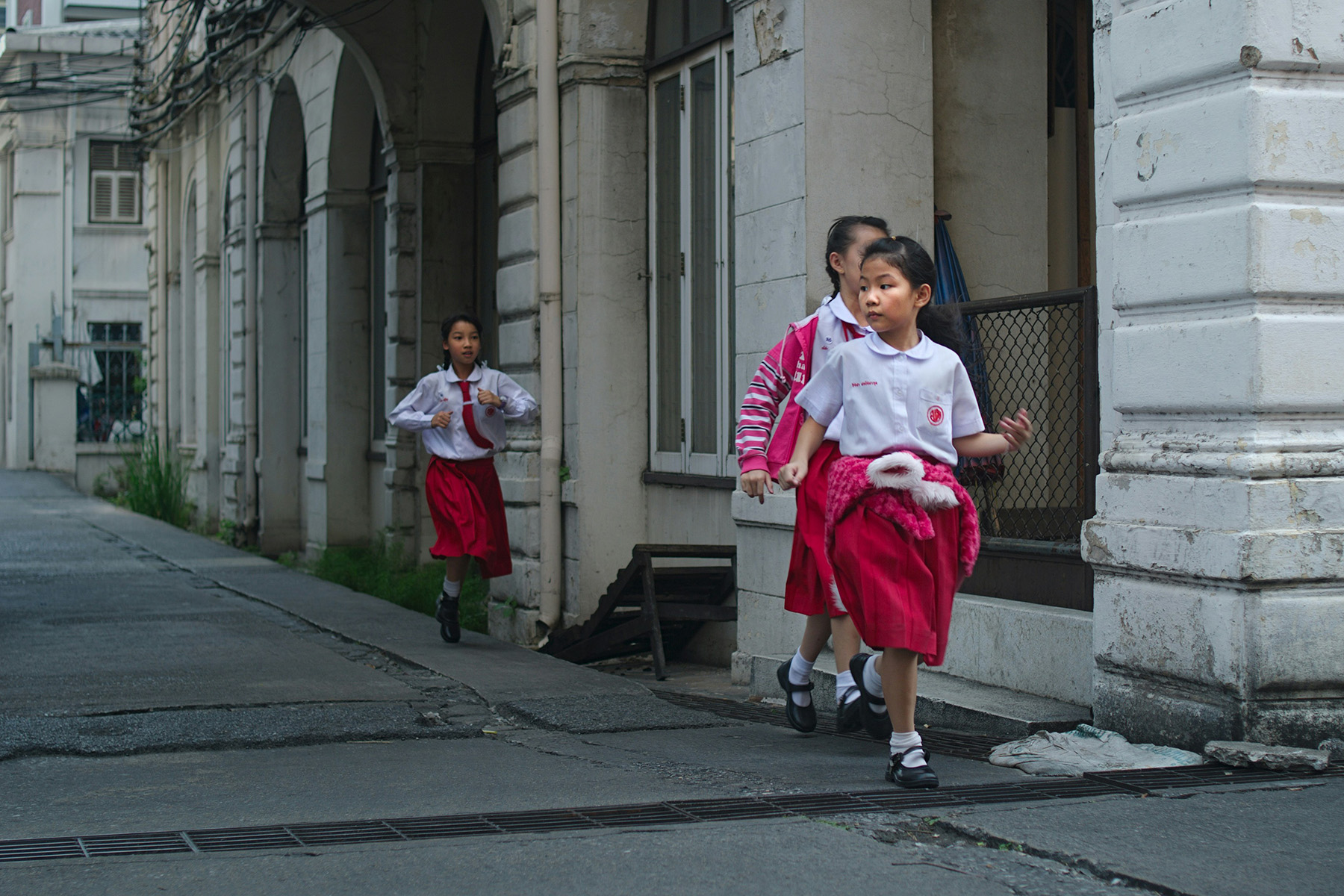
Both public and private school students attend classes from 08:00 to 16:00 from Monday to Friday.
The academic grading system in secondary education uses the grade point average (GPA) as a measurement of academic grades. This ranges from 0 to 4, as follows:
| Numerical Grade Value | Letter Grade Equivalent |
| 4 (4.0 GPA) | A (Excellent) |
| 3 (3.0 GPA) | B (Good) |
| 2 (2.0 GPA) | C (Fair) |
| 1 (1.0 GPA) | D (Pass) |
| 0 | F (Fail) |
The core subjects that are taught in the secondary school system include:
- Arts, careers, and technology
- Foreign languages (i.e., English or French)
- Health and physical education
- Mathematics
- Religion and culture
- Science
- Social studies
- Thai language
Public secondary schools
Similar to public primary schools, public secondary schools in Thailand are free to attend up until Mattayom 3 (grade 9). However, beyond this, students have to pay for their tuition.
Uniforms are mandatory in most public secondary schools in Thailand, and pupils must follow a strict dress code during school hours.
Generally speaking, most students have extra tutoring sessions for core subjects after school or during the weekend. These are usually held at external educational centers or with a private tutor.

The majority of students in Thailand go on to complete Mattayom 6. However, they can also choose to participate in vocational education and training (VET). This lasts for three years and ends with them being awarded a certificate.
Those who continue with the general education stream, on the other hand, focus on specific subjects throughout the rest of upper secondary school. The path of studies usually falls into two categories: studies in science and mathematics or arts and languages.
Private secondary schools
There are several types of private secondary schools in Thailand. Each offers different curricula, teaching methods, and languages of instruction, as outlined below. Tuition fees also vary depending on the type of school.
| Category | Description |
| International schools | Classes are conducted in English and Thai and follow the Thai National Curriculum The student population mostly consists of Thai nationals and a small percentage of international students, most of whom are from China More expensive than Thai schools, but less expensive than international schools |
| Bilingual schools | Classes are conducted in English and Thai and follow the Thai National Curriculum The student population mostly consists of Thai nationals and a small percentage of international students, most of whom are from China More expensive than Thai schools but less expensive than international schools |
| Boarding schools | Available among some international schools that follow the UK or US curriculum Most boarding schools are located in bigger cities such as Bangkok, Phuket, or Chiang Mai The student population mostly consists of upper-class international students |
| Religious schools | Buddhism, Catholicism, and Christianity are the main religions of focus The schools teach good moral conduct and strong religious ethics Religious studies is a core subject |
The International Baccalaureate (IB)
There are currently 33 schools that teach the International Baccalaureate (IB) Diploma in Thailand. These schools offer at least one of the IB’s four programs:
- Primary Years Program (PYP)
- Middle Years Program (MYP)
- Diploma Program (DP)
- Career-related Program (CP)
English is the language of instruction, which makes it a popular choice for expats. That said, Thai nationals have also been allowed to attend international schools and study the IB since 1992.
Graduating in Thailand
Once students have completed Mattayom 3 and Mattayom 6, they must take the Ordinary National Educational Test (O-NET). This evaluates their overall knowledge of the core subjects, including Thai language, mathematics, science, social studies, religion and culture, and foreign languages.

Some students choose to take the General Education Development (GED) exam in order to submit their scores to a university for early entrance. Through this route, students as young as 16 can apply to a university of their choice.
Students who pass the entrance exam will receive the Certificate of Lower Secondary Education upon completing Mattayom 3. They’ll earn the Certificate of Secondary Education after completing Mattayom 6.
Finishing Mattayom 6 is equivalent to graduating from high school. However, certificates of graduation may look different if students complete their last year at an international school under a different curriculum.
Those who wish to enroll in international programs at Thai universities or attend a university abroad may need to meet different application requirements. As such, you should check the websites of the individual institutes to find out the conditions before enrolling.
Can you access financial aid and scholarships?
Because public government schools are tuition-free, low-income families don’t have to worry about paying for their children’s education in Thailand. However, there are many initiatives, additional grants, and scholarships that support disadvantaged or underprivileged children.
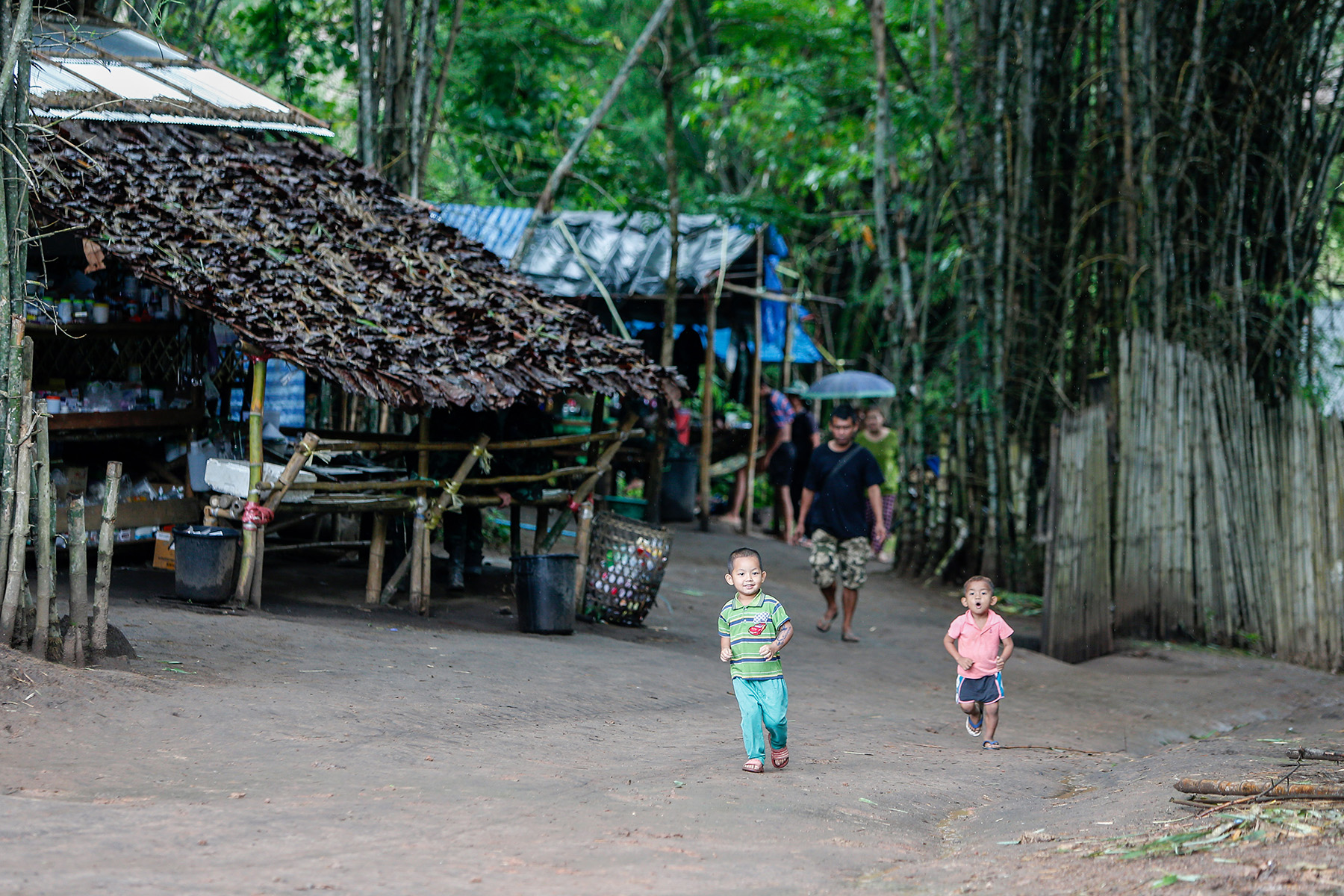
For example, Thailand’s Equitable Education Fund (EEF) provides financial support for underprivileged children so they can complete their basic education. It focuses on projects designed to help students through career development opportunities, vocational school scholarships, and community-centered approaches to reaching self-sustainability.
Aside from this, academically gifted students can seek merit-based grants offered by various organizations within the public and private sectors. There are many scholarships available for students pursuing an undergraduate, postgraduate, or doctoral degree. A few of the many available options include the:
- Royal Thai Government Scholarship Program
- Asian Institute of Technology (AIT) scholarships
- HM King’s & Queen’s Scholarships for Asian Students in Thailand
Many of these scholarships also exist to further academic cooperation between Thailand and other ASEAN (Association of Southeast Asian Nations) countries. Some initiatives, such as UNESCO’s Learning Coin Project, also work to support migrant children with their learning achievements.

Writer and local expert
Minnikar Khamrit
It’s worth noting that the Thai government does not provide financial support to families wanting to enroll their children in private or international schools.
Is there educational support available for international students?
Students who attend local public and private schools in Thailand are expected to be proficient or native in Thai. This is perhaps obvious given that it is the primary language of instruction.
International students who enroll in Thai schools will not be offered extra classes (apart from the mandatory English class) or government-funded language lessons. Because of that, most expats choose to attend international or bilingual schools, which cater to children whose native language is not Thai.
That said, Thai is taught in all schools throughout the country, meaning that most international or bilingual students will learn the language’s fundamentals.
Moreover, Thai lessons in group sessions or through private tutoring are widely available and extremely affordable. As such, children should be able to grasp the language quickly.
Those who wish to learn the Thai language are encouraged to seek out external educational institutes that provide high-quality lessons taught by qualified Thai teachers.
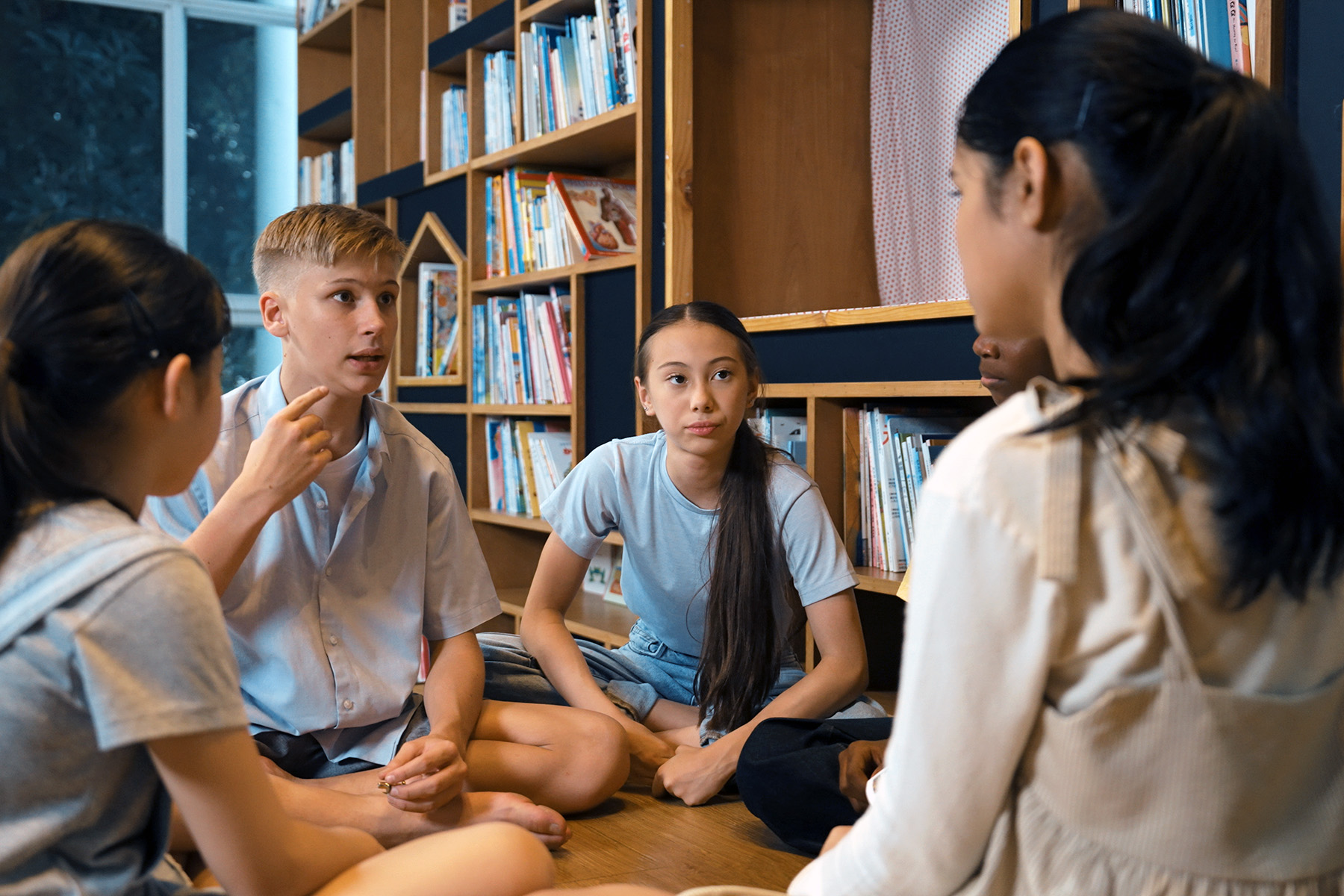
What support exists for children with special educational needs (SEN)?
According to the Ministry of Education, Thailand has over 170 schools that specialize in Special Education Needs (SEN). If a student has any learning challenges, they can seek one-to-one help, in-class support, or counseling at school.
Parents of children with SEN are encouraged to ask the school for further advice or seek help from the school’s special needs support department. There are also many external organizations that are able to provide extra support and knowledge on SEN education.
How easy is it to change schools in Thailand?
Fortunately, transitioning to another school in Thailand is not a difficult process to undergo. A student can transfer to another academic institution at the end of the academic term or year. While there are little to no restrictions regarding when children should change schools, parents often decide to move them either at the end of primary school or at the end of Mattayom 3. That way, they can transfer to an upper secondary school to complete their final years of high school.
It is advised that parents check whether the new school accepts previously earned subject credits from the old school.
Can parents be involved in their children’s schooling?
Fundraising efforts, field trips, or volunteering at the school are just a few of the many ways that parents can get involved in their children’s schooling. Unlike Thai schools, most international schools also host year-round events where parents can help out.
However, opportunities for parent involvement vary among schools. Therefore, you should contact the school directly and ask about any existing Parent-Teacher Associations (PTAs) and other ways to offer support.
Is homeschooling possible in Thailand?
Many expats decide to homeschool their children in Thailand, and it’s been legal since 2004. To do so, parents can simply submit an application. There are also various homeschool communities and expat groups that provide information and support for homeschooled children.
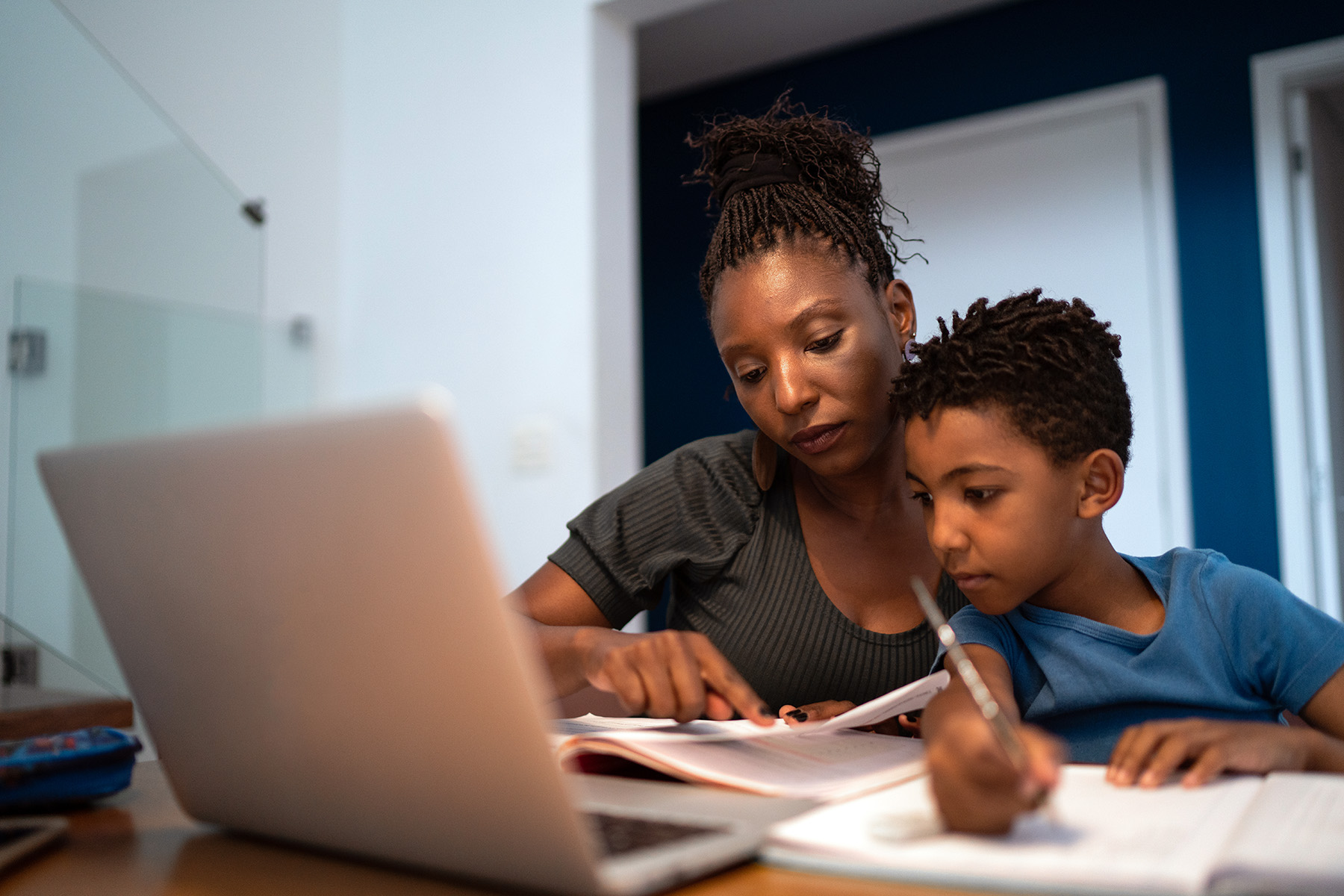
There are numerous children’s clubs and activities every week in bigger cities such as Bangkok and Chiang Mai. This makes it easy for children to participate in extracurricular activities and form new friendships through various social interactions.
Useful resources
- Equitable Education Fund (EEF) – provides information about financial support for children from low-income families in Thailand
- International Baccalaureate (IB) – the official IB website which provides general information about the program worldwide and in Thailand
- UNICEF Thailand Education – provides an overview of plans for Thailand’s education system between 2022 and 2026




